

SUPPORTING RURAL COMMUNITIES 12
Introduction
12.1 Tonbridge and Malling Borough is defined by its diverse and valued countryside, which includes the nationally protected landscapes of the Kent Downs and High Weald National Landscapes, extensive areas of high-quality agricultural land, and a significant portion of the Metropolitan Green Belt.
12.2 These rural areas are central to the borough’s identity, supporting biodiversity, heritage, and the wellbeing of its communities.
12.3 The countryside is home to a network of villages and hamlets, each with its own distinct character and history. It provides a setting for recreation, tourism, and a resilient rural economy, while also contributing to the borough’s environmental sustainability. The Local Plan recognises the need to protect the intrinsic value of the countryside, while enabling appropriate development that supports the vitality of rural communities and responds to local needs. The planning policies provided are aligned with the strategic objectives of the Local Plan and reflect national planning guidance, including the National Planning Policy Framework (NPPF).



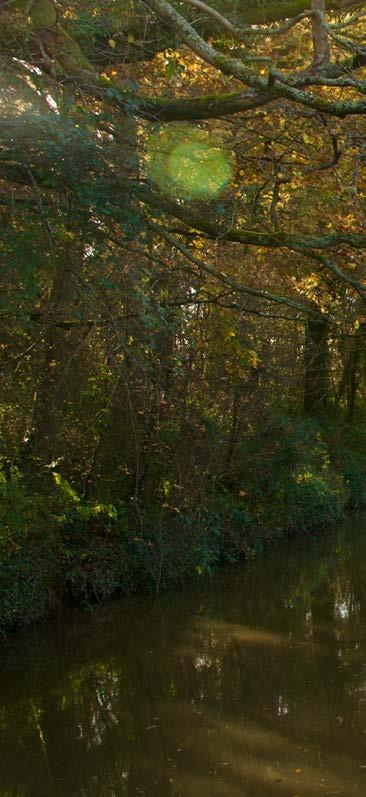
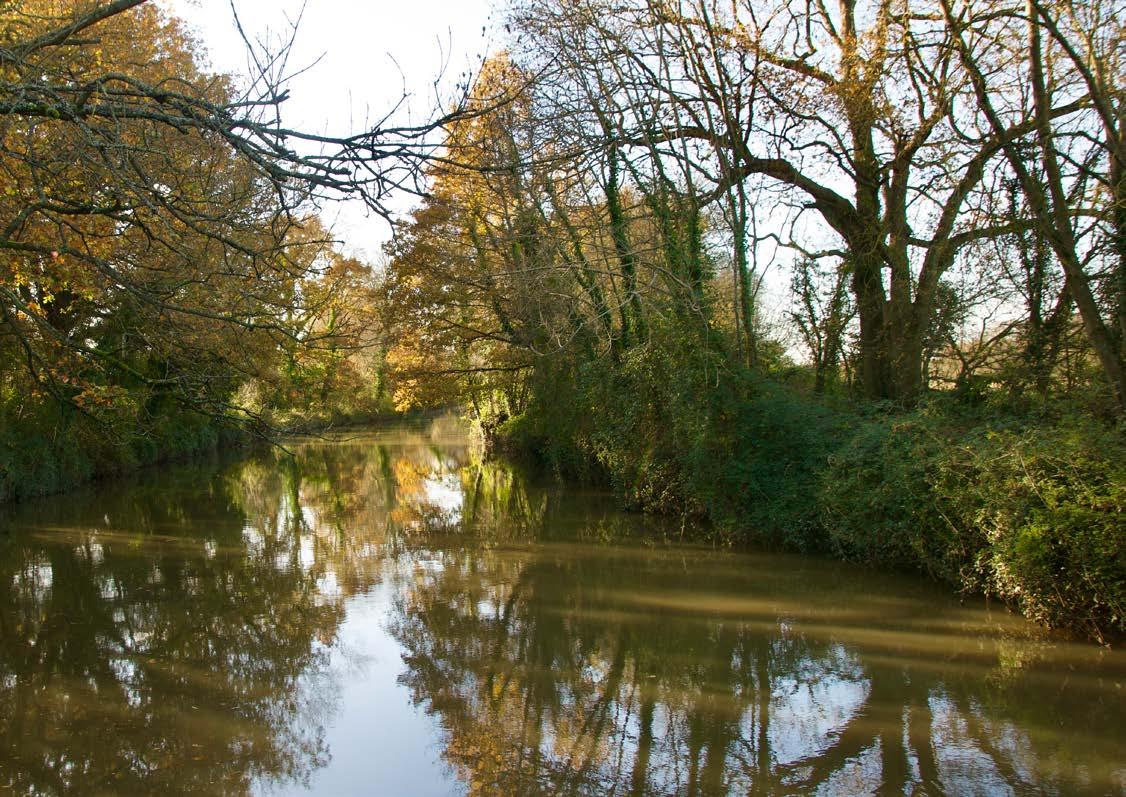
Tonbridge
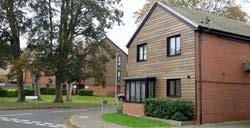

Rural Exception Sites
Introduction
12.4 Tonbridge and Malling Borough contains a diverse range of rural communities, many of which face increasing pressure from high housing costs and limited development opportunities. In these areas, particularly where services and facilities are scarce, enabling local people to remain in their communities is essential to maintaining their vitality and longterm sustainability.
12.5 Rural Exception Sites offer a targeted solution by allowing small-scale affordable housing development on land that would not normally be used for housing. These sites are specifically intended to meet the needs of local households who are unable to access market housing, and who have a strong connection to the area.
12.6 The council supports the use of Rural Exception Sites to help meet evidenced local housing needs in smaller communities. This policy provides a framework for bringing forward such sites in appropriate locations, ensuring that development is locally supported, well-designed, and secured for long-term community benefit.

Policy R1: Rural Exception Sites
1 Small scale residential development in rural areas outside the settlement confines may be permitted where they are consistent with all other Local Plan policies, accord with national Green Belt policy and meet all the following criteria:
a The site is identified to meet unmet local housing need either within the Parish or an adjacent Parish that cannot be located elsewhere and as evidenced by an up-to-date and robust housing needs survey;
b The exception site is adjacent to an existing settlement or an existing sustainable location near a settlement confine;
c The proposed development reflects the required housing need in terms of appropriate size, type, tenure, mix and price, is of high-quality design and in keeping with the character of any adjoining development and the locality;
d The affordable homes are of the same or similar design to any of the market homes that may be allowed in terms of scale and number of bedrooms;
e The development provides suitable and safe access and parking;
f The homes are secured as affordable homes in perpetuity, through a Legal Agreement to ensure that the housing remains available to meet the affordable housing needs of local people; and
g The proposal does not include mixed uses.
2 Proposals that require a small element of market housing to enable the delivery of affordable homes will only be permitted where a viability assessment confirms that the need for market housing is necessary. The scheme will be subject to an independent viability assessment, the costs of which will be paid for by the applicant. The minimum amount of market housing will be supported to ensure that the primary purpose of the development is to deliver affordable homes.
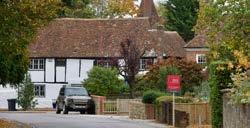

Reasoned Justification
12.7 House prices in rural areas often exceed local incomes, making it difficult for younger people, families, and key workers to remain in or return to their communities. This has implications for the long-term sustainability of rural settlements, including the viability of local services, schools, and businesses.
12.8 Paragraph 82 of the NPPF requires planning policies and decisions to be responsive to local circumstances and to support housing developments that reflect local needs. The NPPF also enables the provision of affordable housing through rural exception site policies. This Policy therefore aligns with national policy.
Policy Implementation
12.9 The council will assess proposals for Rural Exception Sites based on clear evidence of local housing need. This should be demonstrated through an up-todate housing needs survey, ideally undertaken within the last five years, and supported by data from the council’s Housing Register or other up-to-date assessments. Proposals must show that the identified need cannot be met within existing settlement boundaries.
12.10 Given the exception-based nature of this policy, it is essential that any affordable housing delivered is secured in perpetuity. This will be achieved through Section 106 legal agreements, and only tenures that guarantee long-term affordability will be supported. The homes must be allocated to households with a strong local connection as per the council’s latest adopted Housing Allocations Policy.
12.11 Design quality is a key consideration. Developments must be well-integrated with the surrounding built and natural environment, particularly in areas such as the Kent Downs National Landscape, where national policy gives great weight to conserving landscape and scenic beauty. Affordable homes should be indistinguishable from any market homes in terms of appearance and layout.
12.12 Where a small proportion of market housing is proposed to support scheme viability, this must be justified through a viability assessment. The council will commission an independent review of the assessment, with costs met by the applicant. Only the minimum number of market homes necessary to deliver the affordable element will be permitted.
12.13 Rural exception sites are normally brought forward by a Registered Provider or can be brought forward by a Community Land Trust. It will be important for any provider to liaise with the parish council to ensure that a scheme is supported, and early and meaningful engagement is encouraged.


Housing For Rural Workers
Introduction
12.14 With much of the borough being rural there are many farmholdings, horticultural enterprises, equestrian facilities, and other land-based rural businesses. These enterprises are vital to the local economy and the stewardship of the countryside. In undertaking business activities, there may sometimes be special circumstances where it is essential for a rural worker to live permanently at or near their place of work.
12.15 The Policy R2 opposite seeks to address the specific housing needs of rural workers by enabling the provision of accommodation outside settlement confines, where a genuine and essential need is demonstrated.
Policy R2: Housing For Rural Workers
1 Housing for rural workers will be permitted outside settlement confines where the following criteria is met:
a The proposal is in accordance with national Green Belt policy where relevant;
b That there is an essential occupational or functional need for a full-time worker to live permanently at the site or due to the nature of the business requires to be at the site most times;
c That suitable accommodation, either for sale or rent, cannot be found via existing housing in a nearby settlement or location or at the existing site through existing buildings or conversion of existing buildings;
d The business has been operating for a minimum of three years and the business is likely to remain financially viable for the foreseeable future;
e All permanent housing should be of a size that is commensurate with the established functional requirement and sited as close as possible to existing buildings;
f All housing will comply with minimum health standards; and
g All proposals will provide the necessary services to serve the dwellings including access, hardstanding, drainage and ventilation.
2 Evidence submitted on financial viability will be subject to an independent assessment by the council’s appointed consultant, of which, the costs for the independent assessment will be paid for by the applicant.
3 If a new dwelling is essential to support new or existing farming activity, in the first three years of business or criteria 1a-c is not sufficiently demonstrated, then temporary accommodation may be permitted in locations where rural worker’s accommodation is considered suitable. Planning conditions shall be used to limit the duration of the proposed use up to three years. After three years, 1a-c will need to be demonstrated should permanent rural workers accommodation be required.
4 Both permanent and temporary accommodation will be subject to an occupancy condition, limiting its use for occupation to people employed as a rural worker. Removal of such a condition will only be permitted where there is clear evidence that there is no need for the condition to remain in place. In addition, where there is a clear planning justification, permission may be subject to a legal agreement preventing the future separation of farmhouses from any adjoining farm buildings/land.
5 Permitted development rights will be removed for rural workers dwellings to ensure that the dwelling remains of a size commensurate to the needs of the business. Extensions to or replacement of agricultural or forestry or rural business-related dwellings will require a reassessment of need, excluding minor works. Temporary or seasonal accommodation requirements to serve rural enterprises will be considered on a case-by-case basis.

Reasoned Justification
12.16 This Policy supports the sustainability of rural businesses and communities, while ensuring that development in the countryside remains sensitive to its character and complies with national planning policy, including Green Belt protections where applicable. The policy aligns with paragraph 84 of the NPPF, which recognises that isolated homes in the countryside may be justified by an essential need for a rural worker to live permanently at or near their place of work.
12.17 Housing development in the countryside must be carefully controlled to protect the openness of rural areas, and prevent unnecessary encroachment beyond settlement confine boundaries. This policy therefore provides a framework that supports genuine rural occupational housing where this cannot be met through existing accommodation, while ensuring that proposals are essential, justified, proportionate, and sustainable.
Policy Implementation
12.18 Planning applications will be assessed against the criteria set out in the policy. Applicants will be required to submit detailed evidence demonstrating the essential need for on-site accommodation, the absence of suitable alternatives, and the financial viability of the enterprise. This evidence will be subject to independent assessment commissioned by the council, with costs borne by the applicant. To assess whether the existing business is viable, financial information from the three years prior to the planning application will be required to show that the business was profitable for at least one of those years.
12.19 Where permanent accommodation is not justified, temporary structures may be permitted for up to three years, subject to occupancy conditions and a reassessment of need thereafter. All rural workers’ dwellings, whether permanent or temporary, will be subject to occupancy restrictions to prevent misuse and ensure continued alignment with the policy’s objectives.
12.20 To avoid new isolated market housing in the countryside, proposals to remove occupancy restriction conditions will rarely be approved. Any application to remove an occupancy condition will need to demonstrate, that the need for which the dwelling was approved, no longer exists. This includes demonstrating that there is no longer a need for the accommodation to support the business; that the dwelling is not needed to provide for affordable housing; or, to meet rural accommodation needs in the locality. Permitted development rights will be removed to maintain the scale and function of the dwelling in line with the business need. Any proposals for extensions or replacement dwellings will require a reassessment of the original justification, excluding minor works.



Replacement Dwellings Outside Settlement Confines
Introduction
12.21 While the focus remains on directing development to the borough’s most sustainable settlements, there is also recognition of the needs of those already living in rural areas. In particular, some residents may wish to replace existing dwellings that are no longer fit for purpose, whether due to age, condition, or design, so they can continue to live in the countryside in homes that meet their needs.
12.22 Although the construction of new buildings in the countryside is generally restricted, the replacement of lawful dwellings can offer a sustainable alternative to new development on greenfield land. Such proposals can help retain the existing rural housing stock, make better use of previously developed land, and support the long-term sustainability of rural communities. The policy below provides a clear framework for assessing these proposals, ensuring that replacement dwellings are appropriately scaled, sensitively designed, and located in a way that respects the rural setting.
Policy R3: Replacement Dwellings Outside Settlement Confines
1 Replacement dwellings outside settlement confines will be supported where the following criteria are met:
a Replacement dwellings will be on a ‘one for one’ basis and will only be supported where it can be demonstrated that the property benefits from a lawful residential use and the use has not been ‘abandoned’;
b The replacement dwelling is of a comparable size and scale to the existing dwelling and can be accommodated appropriately within the footprint of the existing dwelling, unless there are clear benefits from locating the replacement dwelling in an alternative position e.g. landscape, heritage, local amenity. Where the latter is applicable, then the dwelling must be located within the curtilage of the existing dwelling;
c The dwelling which is to be replaced is demolished within three months of first occupation of the new dwelling;
d The design of the replacement dwelling is in keeping with the character of the area and is sympathetic to its setting in terms of form and massing and is no more visually intrusive than the existing dwelling;
e The replacement dwelling provides suitable access, parking and amenity space without harming the living conditions of nearby residents or adversely impact other nearby uses; and
f Where the proposal is located in the Green Belt, it accords with Policy SP8 and national Green Belt policy.

Reasoned Justification
12.23 The Policy supports a balanced approach to rural development by recognising the legitimate needs of existing rural residents, while safeguarding the countryside from inappropriate or unsustainable change. The NPPF encourages housing in locations that enhance or maintain the vitality of rural communities, and this Policy reflects that principle by enabling the replacement of dwellings where it contributes to the continued occupation and stewardship of rural homes.
12.24 Replacement dwellings can help address issues such as outdated design, poor energy performance, or inadequate internal space, allowing households to remain in their communities without the need to develop new greenfield sites. However, to ensure that such development does not undermine the character or openness of the countryside, the Policy sets clear parameters around scale, siting, and design. It also ensures that only lawful and active residential uses are eligible for replacement, preventing the reintroduction of residential use where it has ceased. In Green Belt locations, additional scrutiny is required to ensure proposals are consistent with national policy and do not result in harm to openness or conflict with the purposes of Green Belt designation.
Policy Implementation
12.25 Applicants should provide clear and proportionate evidence that the dwelling to be replaced is lawful and has not been abandoned. This may include planning permissions, lawful development certificates, or other relevant documentation. Proposals should be accompanied by plans and supporting statements that demonstrate how the replacement dwelling aligns with the policy criteria, particularly in relation to scale, siting, and visual impact.
12.26 Where a new dwelling is proposed in a different location within the curtilage, applicants must justify the relocation with reference to specific benefits such as improved landscape integration, heritage conservation, or reduced impact on neighbouring uses. The demolition of the original dwelling will be secured through planning conditions, with a requirement for this to occur within three months of first occupation of the replacement dwelling to prevent the creation of additional units.
12.27 In Green Belt areas, proposals must be assessed against both local and national Green Belt policy. Applicants should demonstrate that the replacement dwelling does not result in a materially larger building and does not harm the openness or purposes of the Green Belt. Pre-application discussions are encouraged to ensure that proposals are well-informed and policycompliant from the outset.


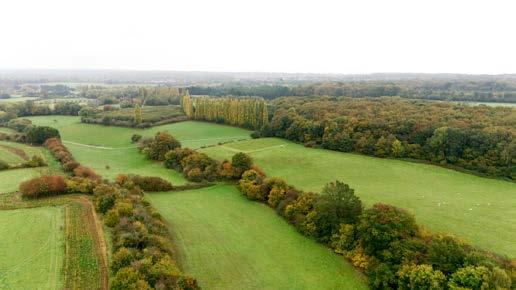
Conversion of an Existing Building to Residential Use Outside Settlement Confines
Introduction
12.28 Outside settlement confines, the countryside is protected from unsustainable or inappropriate forms of development. However, there are limited circumstances where the conversion of existing buildings to residential use may be acceptable, particularly where it supports the re-use of redundant or underused buildings and contributes to the vitality of rural areas. National planning policy supports the principle of making effective use of previously developed land and existing buildings, provided that development is sensitive to its surroundings and does not undermine the character of the countryside.
12.29 Policy R4 sets out a clear and robust framework for assessing proposals for the conversion or subdivision of buildings to residential use in rural areas. It ensures that such proposals are only supported where there is a genuine need, where the building is suitable for conversion without significant alteration, and where the location allows for reasonable access to services and facilities. The policy also safeguards against the loss of viable rural businesses and protects the architectural and historic value of rural buildings.
Policy R4: Conversion of an Existing Building to Residential Use Outside Settlement Confines
1 The conversion or sub-division of an existing building to residential use outside settlement confines will only be supported where the proposal is sufficiently justified and where the following criteria are met:
a It has been demonstrated through the submission of information alongside the application that the existing use / operation of the building or business use of the building has been continually, actively and effectively marketed at an appropriate rate for a minimum of 12 months with a specialist agent;
b The building is proven, by the submission of a structural survey, that it is structurally sound, permanent and of substantial construction to facilitate conversion or subdivision to residential use;
c That the building can achieve conversion or sub-division without requiring extension or alteration including new buildings.
d Residents of the dwelling would be able to safely access sustainable transport options to access services and facilities in a nearby settlement;
e Any curtilage of the dwelling shall be restricted to that which is necessary to facilitate parking or provide a reasonable level of amenity garden space;
f The proposal does not have an adverse effect on the character, appearance or features that are of architectural or of historic interest including its setting; and
g Where the proposal is located in the Green Belt, it accords with Policy SP8 and national Green Belt policy.
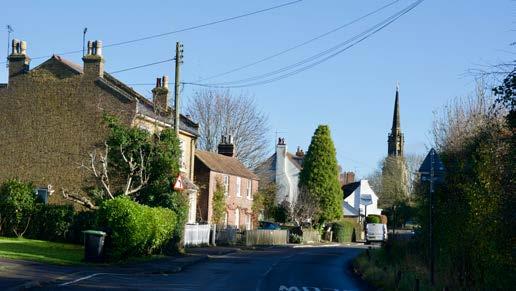
Reasoned Justification
12.30 The conversion of existing buildings outside settlement confines can offer a sustainable way to meet housing needs, particularly where it avoids the need for new-build development on greenfield land. However, such proposals must be carefully managed to ensure they do not result in the unjustified loss of employment or community uses, or lead to sporadic and unsustainable patterns of development in the countryside.
12.31 This Policy ensures that residential conversions are only permitted where the building is no longer viable for its current or previous use, as demonstrated through a meaningful period of marketing. It also requires that the building is structurally capable of conversion without substantial rebuilding or extension, in line with national policy. This approach helps to retain the character and integrity of rural buildings, many of which contribute positively to the landscape and local distinctiveness. The policy also ensures that any new residential use is appropriately located, with access to sustainable transport options and without adverse impacts on the surrounding environment or heritage assets.
Policy Implementation
12.32 Applicants will be expected to provide a comprehensive marketing report, prepared by a qualified agent, demonstrating that the building has been actively and appropriately marketed for at least 12 months for its existing or other suitable uses. The marketing must be realistic in terms of price, terms, and visibility, and should include evidence of enquiries received and reasons for lack of take-up.
12.33 A structural survey must also be submitted to confirm that the building is of permanent and sound construction and capable of conversion without the need for significant rebuilding or extension. Proposals that involve new buildings or substantial alterations will not be supported under this policy. The extent of any residential curtilage should be clearly defined and limited to what is necessary for parking and amenity space, avoiding the domestication of the wider rural setting.
12.34 In all cases, proposals must demonstrate that the new residential use would not harm the character or setting of the building, particularly where it is of architectural or historic interest. Where proposals fall within the Green Belt, they must also comply with national Green Belt policy and any relevant local policies.
Early engagement with the local planning authority is encouraged to ensure that proposals are wellevidenced and policy compliant.


Residential Parks
Introduction
12.35 Residential parks, including caravan sites, form an important part of the housing mix, offering flexible and often more affordable accommodation options. While their contribution to meeting housing needs is recognised, it is essential that new proposals are appropriately located and designed to respect their surroundings. This policy sets out the criteria under which new residential park development or small-scale extensions to existing sites will be considered acceptable.
Policy R5: Residential Parks
1 Proposals for new caravans will be permitted within settlement confines or where smallscale extensions to existing sites can contribute to meeting the council’s housing need, providing the following criteria are met:
a The proposal is sympathetic to the existing surroundings in scale, siting, design characteristics and in relation to the amenity of neighbouring properties;
b The proposal would not have an adverse impact on local character or the amenities of adjoining sites or settlements;
c The proposal includes safe vehicular and pedestrian access, storage areas for waste and recycling and sufficient parking arrangements;
d Adequate services and utilities are provided and the site has good accessibility by sustainable modes of transport to a sustainable settlement;
e It can be demonstrated that there will be no unacceptable adverse effect on the character or appearance of the countryside, residential amenities, traffic conditions or public safety; and
f Where the proposal is located in the Green Belt, it accords with Policy SP8 and national Green Belt policy.
Reasoned Justification
12.36 This Policy supports new caravans within settlement confines or small-scale extensions where applicable. The NPPF encourages planning policies and decisions to promote an effective use of land in meeting the need for homes and other uses, while safeguarding and improving the environment and ensuring safe and healthy living conditions.
12.37 The council acknowledges the role that residential parks can play in broadening housing choice, particularly for older people and those seeking lower-cost home ownership. However, such developments must be carefully managed to ensure they integrate well with existing communities and do not detract from the character or amenity of the area.
12.38 The criteria within the Policy are designed to ensure that proposals are of a scale and are designed appropriately to their context, provide adequate infrastructure and services, and do not result in harm to the countryside, Green Belt, or neighbouring uses. The policy also supports the delivery of housing in sustainable locations, aligning with national planning objectives and the council’s strategic housing aims.
Policy Implementation
12.39 Proposals for new residential park developments or extensions to existing sites will be assessed against the criteria set out in the policy. Applicants should provide supporting evidence that demonstrates how the proposal responds to its context, including details on scale, design, and relationship to surrounding uses. Applications must include information on access arrangements, parking provision, waste and recycling storage, and the availability of essential services and utilities. Where relevant, assessments of landscape impact, transport accessibility, and effects on residential amenity should be submitted.
12.40 In locations within or adjacent to the Green Belt, proposals must clearly demonstrate compliance with national policy, particularly in relation to preserving openness and avoiding inappropriate development. The council will also consider cumulative impacts where multiple proposals are brought forward in close proximity, to ensure that the overall character and infrastructure capacity of the area are not compromised.
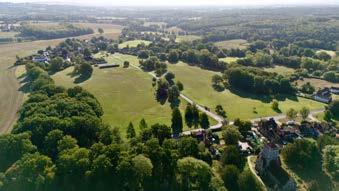

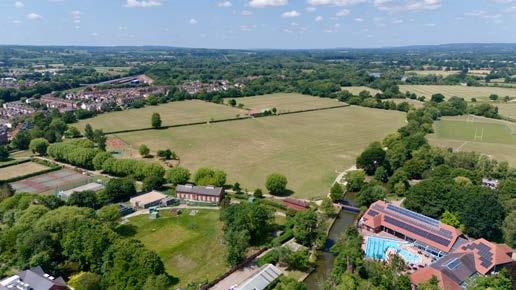
Employment Development Outside Existing Settlement Confines
Introduction
12.41 The NPPF encourages planning policies that support a prosperous rural economy, including the sustainable growth and expansion of all types of business in rural areas (Paragraph 85). This includes enabling the development and diversification of agricultural and other land-based rural businesses, and the re-use of redundant or disused buildings. While development is generally directed toward existing settlements, the NPPF does not define settlement boundaries, nor does it prohibit development outside them where proposals are not isolated and can be justified in terms of sustainability.
12.42 The Policy to the right responds to this national direction by providing a locally tailored framework to support employment development in rural areas, ensuring that proposals contribute positively to the economy while respecting the character and openness of the countryside and Green Belt.
Policy R6: Employment Development Outside Existing Settlement Confines
Intensification or extension of existing employment development.
1 Proposals for the intensification or extension of employment development within the existing operational site boundaries of an employment site will be supported outside settlement confines where:
a A need is demonstrated to facilitate new or expanding operational functions; or
b It can be demonstrated that the business premises is operating at full occupancy or near to it.
2 Where a need is demonstrated, a proposal will only be supported where:
a It is of a scale that is consistent with the proposed use and the existing size and scale of the site and also is acceptable taking into account the character of the area;
b It would not prejudice existing uses at the site by way of any increase in proposed operations;
c It can be demonstrated that all options to re-use or adapt existing buildings within the site have been considered and prioritised, with extensions or new buildings only being proposed where re-use or adaption of existing buildings is not viable or practical;
d The proposal would not generate an inappropriate amount or type of additional traffic movements and the site’s existing vehicular access and parking provision is suitable or can be made suitable; and
e Where the proposal is located in the Green Belt, it accords with Policy SP8 and national Green Belt policy.
Re-use of existing rural buildings for business use.
3 Development proposals that seek to re-use, convert or adapt existing redundant rural buildings for business use that are currently or were last used for employment use will only be supported where:
a A rural location for the type of business can be justified and sustained, without the requirement of further rural buildings to facilitate its use;
b The business will positively contribute to the rural economy through the provision of local employment opportunities;
c The building is permanent and structurally sound and capable of re-use, conversion or adaptation without major re-building, alterations or extensions;
d The building is not required for agricultural purposes both now or in the future;
e The development makes an efficient and viable use of a building that would otherwise remain redundant; and
f Where the proposal is located in the Green Belt, it accords with Policy SP8 and national Green Belt policy.


Reasoned Justification
12.43 This Policy supports employment growth on existing rural sites while protecting the countryside’s character. It balances economic development with environmental sensitivity, ensuring new uses are appropriate in a countryside location, are proportionate and prioritise the reuse of existing structures.
12.44 NPPF para. 88 enables the sustainable growth and expansion of all types of business in rural areas, both through conversion of existing buildings and welldesigned, new buildings.
12.45 The Policy supports intensification and extension of existing employment sites where operational need is demonstrated, aligning with national guidance that encourages the reuse of previously developed land and existing buildings. It also reflects the NPPF’s requirement to protect the Green Belt from inappropriate development, ensuring that proposals do not compromise its openness or permanence. By requiring evidence of occupancy levels, operational need, and consideration of existing buildings, the policy ensures that development is both necessary and proportionate, contributing to sustainable economic growth without undermining environmental objective.
Policy Implementation
12.46 Planning applications should be supported by proportionate evidence that explains why the proposed development is necessary and how it responds to the specific characteristics of the site. Proportionate evidence will be required setting out operational need, site context, and the principles of sustainable rural development. This includes demonstrating that the proposal is a logical evolution of existing activity, and that it makes efficient use of land and buildings already in employment use. Where new buildings or physical expansion are proposed, applicants should show that alternatives, such as internal reconfiguration or reuse of existing structures have been fully explored.
12.47 The Policy’s emphasis on scale, character, and transport impacts means that proposals must be carefully designed to integrate with their surroundings and avoid adverse effects on local infrastructure. In rural and Green Belt locations, particular attention should be paid to visual containment, site layout, and the use of materials that reflect local vernacular. Proposals should also be informed by early engagement with relevant consultees, including highways and landscape officers, to ensure that technical matters are addressed from the outset.

Agriculture, Forestry and Horticulture
Introduction
12.48 The attractiveness of Tonbridge and Malling includes a rich historic heritage, a working countryside that includes small villages and hamlets supported by agriculture, horticulture and forestry. This includes some of the very best productive land in the country and other notable features such as the upper reaches of the River Medway and rich and diverse wildlife habitats.
12.49 Agriculture, forestry and horticulture are all important elements of the rural economy and supports many ancillary businesses. They offer good opportunities for economic development and job creation.
12.50 The council supports proposals for new buildings or structures for the purpose of agriculture, forestry, horticulture and other rural landbased uses in the countryside, focusing on reusing, adapting or converting existing buildings within the site first.
12.51 Agriculture, forestry, and horticulture are integral to the rural identity, economy, and landscape of the borough. These land-based industries not only provide food, timber, and other essential resources, but also contribute to the stewardship of the countryside, biodiversity, and the character of rural settlements. As these sectors evolve in response to climate change, market demands, and technological innovation, there is a need to ensure that planning policy supports their continued viability while safeguarding the intrinsic qualities of the rural environment.
12.52 Policy R7 recognises the importance of enabling appropriate development that supports rural land-based enterprises. It provides a framework for assessing proposals for new buildings and structures associated with these uses, ensuring that development is justified, sensitively designed, and appropriately located. The Policy also reflects the need to balance operational requirements with the protection of landscape character, heritage assets, and the amenity of nearby communities.
Policy R7: Agriculture, Forestry and Horticulture
1 Development proposals for new buildings or structures for the purpose of agriculture, forestry, horticulture and other rural land-based uses including agricultural diversification will be supported where the following criteria are met:
a A robust business case is provided that demonstrates the operational need for the development at the scale and location proposed;
b It can be demonstrated that all options to re-use or adapt/convert existing buildings within the site have been considered and prioritised first, with new buildings or structures only being proposed where reuse or adaption / conversion of existing buildings is not viable or practical; Where this is not viable or practical, the new building or structure should be sited in or adjacent to an existing group of buildings, retain the agricultural character of the site and be of an appropriate scale and design;
c The design and / or location of the building respects rural distinctiveness and farmstead groupings, where applicable with location also reflecting the buildings proposed rural use;
d Any outdoor storage is provided as an ancillary element of other uses; and
e Where temporary coverings or polytunnels are needed, they should be capable of being predominately removed from site when not required and when out of season. This may be a condition of any planning permission granted.


Reasoned Justification
12.53 The Policy responds to the need for a clear and consistent approach to managing development in the countryside that supports rural productivity while maintaining environmental quality. Evidence from local and national sources, including agricultural land use data and rural economic strategies, highlights the importance of enabling modern, fit-for-purpose infrastructure for farming, forestry, and horticulture. However, this must be achieved without undermining the visual, ecological, or cultural value of the rural landscape.
12.54 The requirement for a robust business case ensures that proposals are genuinely necessary for the operation of the enterprise and not speculative or unrelated to land-based activities. Prioritising the reuse of existing buildings aligns with sustainability principles and helps preserve the traditional character of farmsteads. Where new development is necessary, siting and design considerations are essential to ensure that buildings integrate well with their surroundings and do not result in visual or functional harm.
12.55 Temporary structures such as polytunnels, while often essential for horticultural production, can have cumulative landscape and drainage impacts if not carefully managed. The policy therefore includes provisions to ensure their seasonal use is controlled and reversible.
Policy Implementation
12.56 The Policy addresses the requirement for agriculture, forestry and horticulture development within the countryside, should there be an operational need for the development at the scale and location.
12.57 New agricultural buildings and the conversion of certain agricultural buildings to residential, or for business use may be covered by permitted development However, within the Green Belt, National Landscapes, heritage assets or conservation areas planning permission may still be required. Therefore, this Policy relates to proposals where planning permission is required.
12.58 Planning applications will be assessed against the criteria set out in the Policy and relevant national and local guidance. Applicants will be expected to provide clear and proportionate information and evidence.
12.59 Where development is proposed within or near the Kent Downs or High Weald National Landscapes, additional landscape and visual impact assessments may be required. Proposals affecting high-quality agricultural land will be considered to ensure that land use is justified and does not result in unnecessary loss of productive capacity.
12.60 Planning conditions may be used to control the scale, appearance, and duration of development, particularly for temporary structures. The council will also encourage early engagement through pre-application advice, especially for proposals in sensitive landscape areas.

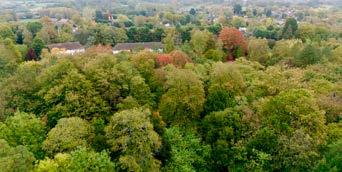

Farm Diversification
Introduction
12.61 Farm diversification plays a vital role in sustaining the viability of agricultural businesses and enhancing the resilience of the rural economy. As farming faces increasing pressures from the market, climate change, and policy reform, diversification offers opportunities for farms to supplement income, retain employment, and contribute to the broader economic and social fabric of rural communities. This policy supports development proposals that enable farms to diversify in a way that complements their primary agricultural function, respects the rural character of the area, and contributes positively to the local economy.
12.62 The Policy recognises the importance of maintaining the integrity of agricultural holdings while allowing for appropriate ancillary uses such as farm shops, tourism, education, and small-scale renewable energy. It encourages the reuse of existing buildings and infrastructure and ensures that new development is sensitively designed and located to preserve the distinctiveness of the countryside and the openness of the Green Belt.
Policy R8: Farm Diversification
1 Development proposals relating to farm diversification will be supported where the following criteria are met:
a A diversification plan is submitted, which demonstrates that the proposed development is necessary to support the continued viability of the existing agricultural business and will provide long-term benefit to the agricultural business;
b Diversification activities will remain ancillary to the primary agricultural business;
c The development will contribute to the rural economy through the provision of local employment opportunities;
d The proposal prioritises the use of existing buildings, infrastructure, utilities, parking and vehicular access, with new buildings and associated facilities and access only being proposed where the use of existing is not viable or practical; Where this is not viable or practical, development should be sited in or adjacent to an existing group of buildings, retain the agricultural character of the site and be of an appropriate scale and design;
e The design and / or location of the building respects rural distinctiveness and farmstead groupings, where applicable, with location also reflecting the buildings proposed rural use;
f Development is restricted to the minimum level reasonably required for the operation of the diversified business;
g The proposal will avoid the loss of the best and most versatile agricultural land, where possible;
h The diversified activities are sensitive to the character of their rural setting and the nature of the business will not adversely affect local amenity;
i The proposal would not generate an inappropriate amount or type of additional traffic movements and the site’s existing vehicular access and parking provision is suitable or can be made suitable; and
j Where the proposal is located in the Green Belt, it accords with Policy SP8 and national Green Belt policy.
Farm shops
2 Where farm diversification relates to farm shops or extensions to farm shops, developments will generally be supported provided that it meets the above requirements and:
a The shop relates to and will be ancillary to the existing rural business;
b The scale and scope of the business will not harm the accessible convenience retail offer available to the community in the surrounding area;
c The produce sold in the farm shop aims to sell:
i A minimum of 40% of products or produce from that produced on the premises or holding;
ii 30% or more from the Kent region; and
iii The remainder being sourced from the Southeast region.
3 Where appropriate, the council may impose conditions to control the future expansion or nature of the farm diversification business including farm shops when granting planning permission. New farm shops will likely be restricted to Use Class E(a) retail with ancillary Use Class E(b) food and drink.

Reasoned Justification
12.63 The NPPF in para 88 supports the development and diversification of agricultural and other land-based rural businesses. Supporting farm diversification will help to secure the long-term sustainability of agricultural enterprises and the wider rural economy. Evidence from national surveys indicates that over half of UK farms engage in diversified activities, with income from these ventures often exceeding that from traditional farming operations. Diversification can reduce reliance on agricultural subsidies, provide more predictable revenue streams, and help farms adapt to changing consumer demands and environmental challenges.
12.64 In Kent, the character and heritage of farmsteads are particularly valued, and the Policy ensures that diversification proposals respect traditional farmstead groupings and rural design principles. The inclusion of criteria for farm shops reflects the growing consumer interest in local produce and the role such enterprises play in strengthening local food networks.
Policy Implementation
12.65 Planning applications will be assessed against the criteria set out in the Policy. Applicants will be expected to submit a diversification plan demonstrating the necessity and benefits of the proposal for the agricultural business. Proposals should prioritise the reuse of existing buildings and infrastructure, and any new development must be appropriately scaled, designed, and located to minimise landscape and amenity impacts.
12.66 Where proposals involve farm shops, additional criteria will apply to ensure that the retail offer remains ancillary to the farm business and supports local and regional food produce. Conditions may be imposed to control the nature and scale of the enterprise, including restrictions on use classes and future expansion.

Sustainable Tourism and Visitor Accommodation

Introduction
12.67 Tonbridge and Malling is home to a rich blend of historic towns, picturesque villages, and diverse landscapes, including the Kent Downs and High Weald National Landscape and the River Medway corridor. These assets underpin a growing visitor economy that contributes significantly to local employment and business vitality. The borough’s tourism offer includes heritage attractions, walking and cycling routes, nature reserves, and seasonal events that draw both domestic and international visitors.
12.68 Policy R9 opposite supports the development of sustainable tourism and visitor accommodation that enhances the borough’s appeal while safeguarding its environmental and community assets. It aligns with the council’s strategic priorities to promote economic resilience, protect the Green Belt, and improve access to nature and cultural heritage. The policy encourages well-located, highquality proposals that contribute to the visitor experience and support the borough’s identity as a destination for sustainable leisure and recreation.
Policy R9: Sustainable Tourism and Visitor Accommodation
1 New tourism facilities, including visitor accommodation1 or improvements and extensions to existing tourism or visitor accommodation facilities will be supported where the following can be demonstrated:
a The proposal is located within settlement confines or where the proposal relates to tourism facilities can justify why the proposal would not be suitable to be located within settlement confines;
b The proposal meets an identified and evidenced demand for the facilities or accommodation, positively contributing to tourism in the borough and does not detract from the vitality and viability of town or village centres and other local facilities;
c The proposal closely relates to or is closely associated to an existing visitor attraction or tourism use that is seeking to expand, contributing to the retention or enhancement of existing facilities and the tourism offer;
d The location of the proposal is accessible using sustainable modes of transport including walking, cycling and wheeling;
e The proposal would not generate an inappropriate amount or type of additional traffic movements and the site’s existing vehicular access and parking provision is suitable or can be made suitable;
f The proposal, either alone or cumulatively with other tourism or visitor uses in the area, will not detract from the experience of visitors or adversely affect the character, historical significance, landscape, natural environment, appearance or amenity of the area;
h Where the proposal is located in the Green Belt, it accords with Policy SP8 and national Green Belt policy.
2 Development proposals that would result in a loss of tourist facilities and / or visitor accommodation to alternative uses will need to be considered in line with Policy R9.
3 Where proposals for temporary structures such as yurts, glamping pods, towing caravans are acceptable in relation to this and other relevant policies in the plan, then a condition or legal agreement may require removal from site when not required and when out of season.
4 The occupation of any new tourist accommodation will be restricted via condition or legal agreement to ensure it is a tourist use solely and not for permanent residential occupation.
1 Visitor accommodation includes hotels, guesthouses, bed and breakfast establishments, self-catering accommodation and outdoor accommodation such as caravan, camping sites and glamping sites (including yurts, log cabins and pods).
g The proposal makes best use of existing buildings and structures. Where new structures or buildings are demonstrated to be necessary, these must relate physically and functionally to existing buildings or structures associated with the enterprise and be of an appropriate design and scale;


Reasoned Justification
12.69 Tourism in Tonbridge and Malling supports over 4,500 staying trips annually and contributes to Kent’s wider visitor economy, which generated over £4 billion in 2023. The borough’s proximity to London, combined with its rural character and heritage assets, makes it an attractive location for short breaks, day visits, and nature-based tourism. However, the sector faces challenges including seasonal fluctuations, pressure on infrastructure, and the need to balance growth with environmental protection.
12.70 The Policy responds to these challenges by setting clear criteria for new and expanded tourism development. It ensures that proposals are evidence-led, meet identified demand, and are accessible via sustainable transport. The policy also reflects the borough’s Green and Blue Infrastructure Strategy, which highlights the importance of protecting natural assets and enhancing biodiversity through sensitive development.
12.71 The Policy supports the reuse of existing buildings and encourages proposals that complement existing attractions. It also introduces safeguards to prevent the loss of tourism facilities and to ensure that visitor accommodation remains in seasonal or short-term use, avoiding conversion to permanent residential dwellings.
Policy Implementation
12.72 The Policy seeks a balanced approach that supports tourism growth while safeguarding the borough’s environmental and community assets. Planning applications will be assessed on their ability to contribute positively to the visitor economy, with particular attention given to their location, accessibility, and relationship to existing attractions or infrastructure. Proposals situated outside settlement confines will need to demonstrate a clear rationale, such as proximity to a geographically fixed natural or heritage feature, or alignment with rural tourism objectives.
12.73 Applicants will be expected to provide evidence of demand for new or expanded facilities, which may include market research, business plans, or alignment with borough-wide tourism strategies. Accessibility will be a key consideration, with developments required to demonstrate how they can be reached via sustainable modes of transport, including walking, cycling, and public transport. Where vehicular access is necessary, the impact on local roads and parking provision will be carefully considered.
12.74 Design quality and integration with the surrounding landscape will be essential, particularly in areas of high sensitivity such as the Green Belt or the Kent Downs or High Weald National Landscape. The reuse of existing buildings will be encouraged, and where new structures are proposed, they must be of a scale and form that complements the existing built and natural environment. Temporary and seasonal accommodation, such as glamping pods or yurts, may be supported where they are appropriately managed, including conditions or legal agreements requiring removal during offseason periods.
12.75 To prevent the erosion of the borough’s tourism offer, proposals involving the loss of visitor accommodation or facilities will be subject to scrutiny under Policy R9, requiring evidence of marketing and viability. Furthermore, all new tourist accommodation will be subject to occupancy restrictions to ensure it remains in short-term use and does not transition into permanent residential occupation.
12.76 Justification on why the proposal would not be suitable to be located within settlement confines may include a requirement to rely on a geographically fixed resource or where there is an overriding benefit for locating the tourism facility not within settlement confines.
Equestrian Facilities in the Countryside
Introduction
12.77 The borough contains two National Landscapes, the Kent Downs and the High Weald. 40% of Kent’s bridleways are in the Kent Downs National Landscape, making the Kent Downs a significant area for horse riding in Kent. This network of bridleways continues beyond the National Landscapes into the wider countryside. Horses are also an increasingly common grazing animal in the borough and equestrian activities can play an important role in the land-based economy and can make a positive contribution to landscape character. However, the subdivision of paddocks, new structures, overgrazing, lighting and ménages can detract from the landscape character if poorly designed and managed.
12.78 The keeping of horses and horse riding is an increasingly popular recreational pursuit and can be one form of farm diversification. The Landscape Character Assessment identifies locations across the borough where horse paddocks and grazing land are part of the intrinsic character of an area.
12.79 Horses kept for recreation, sport and business are not classed as an agricultural activity. Equine facilities therefore do not have any agricultural permitted development rights, meaning that most development requires planning consent. To ensure that equestrian facilities are located sustainably, proposals for new stables will be expected to demonstrate how they will be managed without the need for new supporting residential accommodation being provided on the site.
12.80 Equestrian-related development is important to the rural economy and the council supports proposals for appropriate equestrian facilities in the countryside.
12.81 This Policy supports proposals for appropriate equestrian facilities in the countryside, focusing on reusing or adapting or converting existing buildings to minimise new development.
Policy R10: Equestrian Facilities in the Countryside
1 Proposals for appropriate equestrian facilities in the countryside should have regard to the Tonbridge and Malling Landscape Character Assessment, the National Landscape Management Plans and national Green Belt policy where relevant, and should ensure that:
a It can be demonstrated that all options to re-use or adapt/convert existing buildings within the site have been considered and prioritised first, with new buildings or structures only being proposed where re-use or adaption / conversion of existing buildings is not viable or practical;
b the scale of the facility is no more than is reasonably required for the proper functioning of the enterprise or the use of the land to which it is associated;
c the facility is unobtrusively located and designed so as not to introduce a prominent urban element into a countryside location, including the impact of any new or improved access and car parking areas;
d the proposal should be accompanied by a lighting strategy and should not lead to significant increases in light pollution in accordance with Policy NE12;
e in the case of all-weather riding arenas or other facilities for the exercising of horses, the degree of engineering operation required and the resultant re-grading of land, including any earth mounding and retaining structures, does not result in incongruous or discordant landform out of character with its setting that cannot be mitigated through the use of appropriate hard and soft landscape techniques. Structures, engineering works and buildings serving equine uses should be removed from the site when they are no longer in use and are no longer required to serve the equine use of the land. Sufficient grazing land for horses will also be required to be available;
f the proposal does not generate traffic of a type or amount inappropriate for rural roads or would impact the character of the rural roads: and
g the proposal would not result in ground contamination or pollution risk associated with waste and will be accompanied by a waste management plan; and
h Where the proposal is located in the Green Belt, it accords with Policy SP8 and national Green Belt policy.
Reasoned Justification
12.82 This Policy supports proposals for appropriate equestrian facilities in the countryside. It will be used to guide decisions on the provision of equestrian facilities to ensure any proposals should retain and utilise existing buildings where possible, with new buildings requiring justification and sensitivity to the site.
12.83 In order to minimise any impact of any such development on the landscape character of the area, priority should be given to the conversion of existing buildings where they exist, and, where this is not possible, careful consideration should be given to the design, scale, siting, external appearance, access, lighting, and landscaping of any new development.
Policy Implementation
12.84 This Policy applies to proposals for appropriate equestrian facilities in the countryside. For the protection of the countryside, proposals for stables, liveries and other horse related activities should consider the effect the proposed development will have on the countryside and the local area. In addition, the effect the proposed development on areas of nature conservation importance, archaeological sites and the local landscape should be considered.
12.85 A proposed development for equine development must not result in an irreversible loss of the best and most versatile agricultural land and as such, should the equestrian use cease, the land must be capable of being restored to a productive green environment.
12.86 Development proposals should have regard to national Green Belt policy where relevant, the Landscape Character Assessment, and if located within one of the National Landscapes or their settings, should have regard to the relevant Management Plan and associated guidance. In addition, proposals for development in the Kent Downs National Landscape should have regard to Managing Land for Horses – a guide to good practice in the Kent Downs National Landscape.
12.87 Any proposed external lighting would need to be demonstrated to be necessary and designed to have minimal impact on both residential amenity and the visual amenity of the surrounding area.
12.88 The proposed development should consider its relationship to the existing bridleway network and proximity to the main network, as well as the safety and comfort of horses in terms of space for grazing, exercising and waste management.
